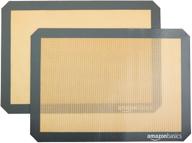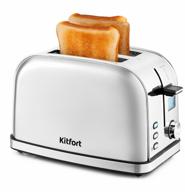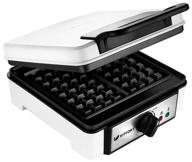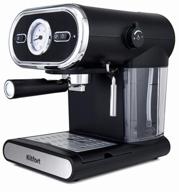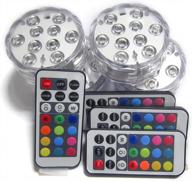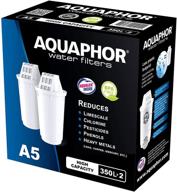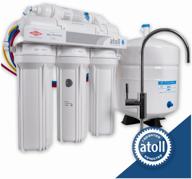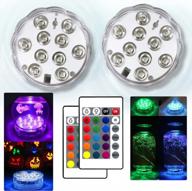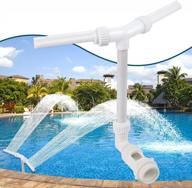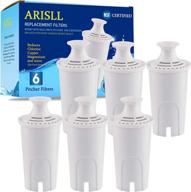Another interesting products
Is Your Tap Water Safe? Types of Water Filters and How They Work
Many people wonder if the tap water coming out of their faucet is truly safe to drink. While municipal water supplies in most developed countries are treated and tested regularly, there can still be contaminants present that affect taste or health.
Potential Contaminants in Tap Water
Some of the most common potential contaminants found in tap water include:
- Microorganisms like bacteria, viruses, and parasites
- Inorganic chemicals like lead, mercury, and arsenic
- Organic chemicals like pesticides, herbicides, and industrial solvents
- Radionuclides from natural deposits
- Disinfection byproducts from chlorine treatment
Even if these are at low levels individually, together they could pose health risks for vulnerable populations when consumed over many years.
Types of Water Filters
There are several types of water filters designed to remove different kinds of contaminants from tap water:
Activated Carbon Filters
These use a porous carbon medium to absorb chemicals and impurities. They are effective at removing chlorine, pesticides, herbicides, industrial solvents, and some heavy metals.
Reverse Osmosis Systems
RO forces water through a semi-permeable membrane that traps microorganisms, inorganic chemicals like lead and arsenic, and some organic chemicals. It also removes healthy minerals, so these need to be added back in.
UV Water Purifiers
These systems use ultraviolet light to damage the DNA and kill microorganisms like bacteria, viruses, parasites, and mold.
Deionizers
Deionizers use an ion exchange process to remove dissolved inorganic salts, metals, radionuclides, and other ionic compounds.
Choosing the Right Filter
Consider having your water tested first to see which contaminants are present. This will help determine the right type of filter to remove the specific impurities in your water. Also make sure to follow the manufacturer's instructions for filter replacements and maintenance.
Using a quality water filter can give you peace of mind knowing that the water you and your family drink is safer and healthier.
Similar products
Top-Rated Water Coolers For Home and Office - Features To Look For
Installing a water cooler is a convenient way to have cold, filtered water always on hand. But with so many models on the market, how do you choose the best one? Here are the top features to look for when selecting a top-rated water cooler:
Filtration System
A key component is the type of filtration system used to purify the water. Many models feature:
- Carbon filtration - removes chemicals, odors, tastes
- UV purification - kills bacteria and microorganisms
- Reverse osmosis - filters out heavy metals and other contaminants
Multi-stage filtration provides the best quality drinking water.
Dispensing Options
Convenience features include:
- Hot and cold water dispensers
- Child safety lock for hot water
- Touchless dispensing sensor
- Adjustable dispensing heights
Look for separate hot and cold spouts and safety features if there are children around.
Tank Capacity
Larger water tanks hold more:
- 3-5 gallons - small office
- 10 gallons - large office
- 18+ gallons - very high use
Choose tank capacity based on your space and number of users.
Energy Efficiency
Top models have energy saving features like:
- Insulated tanks
- Sleep mode to conserve power
- Energy star certified
This makes them more affordable to operate long-term.
Investing in a high quality, top-rated water cooler means you can enjoy the benefits of fresh, cold water with the latest innovations in filtration, sanitization, and convenience.
Water Cooler vs. Bottled Water: Pros and Cons of Each
When it comes to drinking water, you have two convenient options - using a water cooler or buying bottled water. What are the pros and cons of each method?
Water Coolers
Pros:
- Provided filtered, purified water on demand
- Eliminate plastic bottle waste
- Cheaper per gallon than bottled water
- Convenient hot and cold water dispensers
- Refill reusable bottles instead of buying disposable plastic
Cons:
- Upfront investment for equipment purchase
- Space needed for installation
- Power usage for heating and cooling
- Filter changes and sanitization required
Bottled Water
Pros:
- Portable and convenient individual serving sizes
- No equipment or installation required
- Wide availability in stores and vending machines
- Variety of brands and enhanced waters available
Cons:
- Plastic waste and environmental impact from bottles
- Higher cost per gallon than tap or filtered water
- Concerns about microplastics from bottled water
- Still requires reusable bottles for sustainable choice
The Verdict
For most homes and offices, having a water cooler is the more economical and eco-friendly option over bottled water. With proper maintenance, water coolers provide a steady supply of clean drinking water while eliminating plastic waste. Bottled water has its place for portability, but cannot match the affordability and sustainability of filtered water dispensers.
Maintenance Tips to Keep Your Water Cooler Clean and Working
Water coolers provide refreshing cold water on demand, but only if you properly care for them. Follow these maintenance tips to keep your water cooler in good working order.
Change Filters Regularly
The filter is critical for removing contaminants and sediments from the water supply. Check the manufacturer's recommendations for when to swap out filter cartridges. Generally every 3-6 months is ideal depending on usage and water quality.
Sanitize the Reservoirs
To inhibit mold and bacteria growth, sanitize the reservoirs 2-4 times per year. Turn off and unplug the unit, then clean the reservoirs with a sanitizing solution. Let it soak per the directions, then rinse thoroughly before using again.
Clean the Condenser Coils
For coolers with compressors, clean the condenser coils quarterly with a coil brush or vacuum attachment. Dust buildup on the coils will lower cooling efficiency.
Check for Leaks
Inspect water line connections, the spigot, and all fittings for leaks. Catching leaks early prevents mineral buildup and damage. Tighten fittings or replace worn gaskets as needed.
Descale Hot Water Tanks
For hot water coolers, flush the tank annually with a descaling solution to prevent mineral deposits. Let the descaler work, then rinse thoroughly.
Keep It Clean
Wipe down the exterior regularly and empty the drip tray. Clean the faucet heads and backsplash wall occasionally to remove grime.
Check Power and Water Supply
Make sure the unit is plugged in and circuit breakers are working. Confirm water valves are fully open. Reset power or water supply after any shutoffs.
Replace Old Parts
Well-worn parts like valves, switches, tubing, and seals may need replacing over time. Use manufacturer approved replacement parts when repairs are needed.
With proper maintenance and care, your water cooler will continue dispensing clean, cool water for years to come. Be diligent about regular service and you'll keep this office or kitchen necessity humming along.
Choosing the Right Water Cooler or Dispenser by Location and Usage
Selecting the best water cooler or dispenser for your needs depends on where it will be used and how much demand there is for water. Consider these key factors when deciding which type is right for you.
Office Buildings
For offices, look for robust, high-capacity coolers that can handle constant use throughout the workday. Recommended features:
- Large tanks (10+ gallons) to meet demand
- Durable, corrosion-resistant stainless steel construction
- Commercial grade compressor for continuous cooling
- Self-cleaning and automatic shut-off to prevent overflow
Residential Homes
For home use, prioritize convenience, efficiency, and ease of maintenance. Models with these attributes are ideal for families:
- Compact size to fit kitchen spaces
- Energy saving insulation and sleep mode
- Built-in leak detector and cleaning light
- Child safety lock on hot water dispenser
Outdoor Areas
Rugged outdoor coolers keep workers hydrated in hot conditions. Look for:
- Durable polyethylene cabinet resists weathering
- Cold and hot temperatures from the same tap
- Cup dispenser and bottle filler nozzle
- Safety drain to prevent freezing water damage
Server Rooms
Server room coolers provide cold water without taking up server space. Features like:
- Wall-mounted, space saving design
- Front ventilation to avoid overheating servers
- Alarm for water supply outage or overflow
- Leak proof construction with catch pan
Choosing a water cooler tailored for your specific location and usage needs ensures the best performance and convenience.
Water Filtration Methods: Reverse Osmosis, Ultraviolet, Activated Carbon
There are several technologies used in water filters to remove contaminants and purify drinking water. Three of the most common are reverse osmosis, ultraviolet radiation, and activated carbon filtration.
Reverse Osmosis
Reverse osmosis (RO) uses pressure to force water through a semi-permeable membrane. This membrane has microscopic pores large enough for water to pass through but small enough to block larger particles like bacteria, viruses, heavy metals, and minerals.
- Removes up to 99% of contaminants
- May remove healthy minerals, so these need to be added back in after treatment
- Requires more thorough pre-filtration than other methods
Ultraviolet Purification
UV water purifiers use ultraviolet light to damage the DNA of microorganisms in the water, rendering them unable to reproduce and harmless.
- Effective at killing bacteria, viruses, mold, fungi
- Does not remove chemicals or dissolved solids
- Bulb needs replacing about once per year
Activated Carbon Filtration
Activated carbon filters contain a highly porous carbon medium that absorbs impurities as water passes through.
- Removes organic chemicals, chlorine, odors, and bad tastes
- Least expensive filtration method
- May allow some contaminants like heavy metals through
The best filtration systems use a combination of methods like RO and UV or multiple stages of activated carbon to remove a wide range of contaminants. Proper maintenance like changing filter cartridges is also essential for any water filtration system.
What is the benefit of Amazon Prime when buying "Water Coolers & Filters"?
Amazon Prime provides a number of benefits when purchasing water coolers, dispensers, and filters that can improve convenience and savings:
Free Two-Day Shipping
Amazon Prime members get free two-day shipping on eligible items. This allows you to get large or heavy items like water coolers delivered directly to your home or office quickly and without paying shipping costs. No need to lug heavy bottles or equipment from a retail store.
Free Same-Day Delivery
For Prime members in eligible zip codes, you can receive same-day delivery on certain in-stock items. This is extremely convenient if you need replacement filters or other accessories urgently.
Try Before You Buy
The Prime Try Before You Buy program allows members to test out select water coolers for 30 days before purchasing. You can experience features and performance to ensure it meets your needs.
Extended Returns
Amazon Prime provides an extended 30 day return window for most items, which is useful if you change your mind after trying out a water cooler or filter.
Access to Exclusive Deals
As a Prime member, you get access to special discounts and deals on water filtration products. This provides savings on both large appliances and recurring filter purchases.
Overall, a Prime membership can provide much more convenience and potential savings when purchasing water-related appliances and accessories online.
Top products in 💧 Water Coolers & Filters
- Is Your Tap Water Safe? Types of Water Filters and How They Work
- Potential Contaminants in Tap Water
- Types of Water Filters
- Activated Carbon Filters
- Reverse Osmosis Systems
- UV Water Purifiers
- Deionizers
- Choosing the Right Filter
- Top-Rated Water Coolers For Home and Office - Features To Look For
- Filtration System
- Dispensing Options
- Tank Capacity
- Energy Efficiency
- Water Cooler vs. Bottled Water: Pros and Cons of Each
- Water Coolers
- Bottled Water
- The Verdict
- Maintenance Tips to Keep Your Water Cooler Clean and Working
- Change Filters Regularly
- Sanitize the Reservoirs
- Clean the Condenser Coils
- Check for Leaks
- Descale Hot Water Tanks
- Keep It Clean
- Check Power and Water Supply
- Replace Old Parts
- Choosing the Right Water Cooler or Dispenser by Location and Usage
- Office Buildings
- Residential Homes
- Outdoor Areas
- Server Rooms
- Water Filtration Methods: Reverse Osmosis, Ultraviolet, Activated Carbon
- Reverse Osmosis
- Ultraviolet Purification
- Activated Carbon Filtration
- What is the benefit of Amazon Prime when buying "Water Coolers & Filters"?
- Free Two-Day Shipping
- Free Same-Day Delivery
- Try Before You Buy
- Extended Returns
- Access to Exclusive Deals









